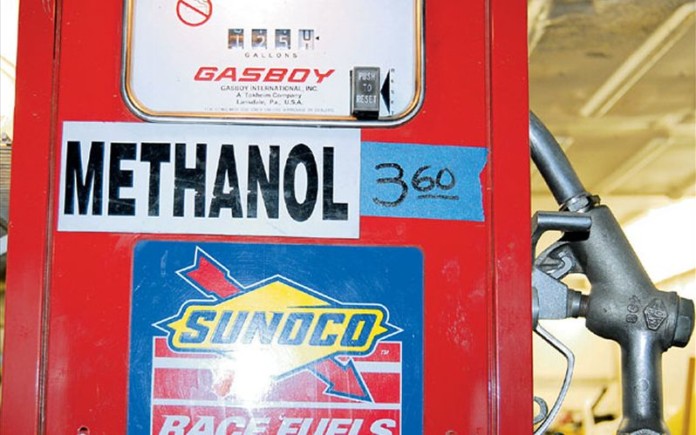The Indian government acknowledges India’s heavy dependence on fossil fuels – around 29 billion liters of petrol and 90 billion liters of diesel per year, making it the 6th biggest consumer in the world, and is expected to become the 3rd largest by 2030.
In fact, the government has been trying to tackle this with the use of another alternative fuel since 2003 – ethanol. The Ethanol Blended Petrol (EBP) Programme was started off with 5% blending, which was to be increased to 20% level by 2017. However, the Oil Marketing Companies (OMCs) have been able to achieve less than 3% blending due to non-availability of ethanol. The government has even been pricing ethanol purchase under an administered price mechanism to incentivize sugar mills to produce ethanol to meet the targets.
On this backdrop, the Indian government has been considering introducing methanol, its blends, and its variants like Di Methyl Ether (DME) to substitute the fossil fuel derivatives in India. Methanol can replace both petrol & diesel in transportation, and as DME, it can replace LPG, wood, kerosene in cooking fuel. It can also replace diesel in railways, marine sector, gensets and power generation. Methanol-based reformers could be the ideal compliment to Hybrid and Electric Mobility.
As claimed by the government, M15 – a blend of 15% methanol in petrol will reduce pollution by 33% & diesel replacement will reduce it by more than 80%. Methanol can also be easily produced from Natural Gas, Indian High Ash Coal, Bio-mass, MSW, stranded and flared gases, through which India can achieve methanol production at as low as Rs. 19 per liter. There is also the more sophisticated technology of methanol production through CO2 recovery.
Currently the country has a capacity to produce 2 MMT of methanol from 5 fertilizer plants, which produces close to 1.5 MMT, all of which is used as chemical and pharma industry feedstock. NITI Aaayog’s roadmap on Methanol estimates that to substitute 10% of crude imports by 2030, by Methanol alone, approximately 30 MMT of methanol would be required.
The EV revolution may take 5 years
There has been a remarkable show of interest from the government for promotion of EV till a few months back, with a strong intent to have only electric cars in India by the year 2030. However, the government has been unable to back up these intentions with policy measures. As a result, this has left some space for methanol as an alternative fuel under the government’s green mobility initiatives, instead of a hard shift to EVs.
Such a hard shift to EVs would bring along with it a myriad of woes for the auto industry, as well as for the general public. Even if the government foots the price differences between EVs and fossil-fuelled vehicles through incentives to keep the industry’s’ volumes at their current level, the auto-makers would require a good 5-6 years to research and develop EV variants across its portfolio. Apart from this, the companies would also run out of options to thoroughly monetize any of its young vehicle platforms, which would mean a loss of investment.
Then there is also the question of how the used car market, which sells close to 3.5 million vehicles annually, generating close to Rs. 100,000 crore in revenue, stand up to such changes. Besides, shifting to EV will require large investment in setting up of vehicle charging infrastructure throughout the country. Obsolescence of existing refueling stations will also add to this cost. There is also the looming threat to cobalt supplies which make up a significant input to the manufacturing of Li-ion batteries.
Being in its early stages of development, there is also risk of failure depending upon how the EV technology would pan out in the years to come. Even in countries that have seen high EV adoption like USA, people now lease nearly 80% of battery-electric vehicles and 55% of all plug-in hybrids. Most of this has been due to the reluctance of the customers to commit to ranges and charging times which might become inferior in next 3 years, and the abysmal resale value which drops to around 23% of the original price within 3 years.
With so many key industries at stake, shifting to EVs may cause significant damage to the growth of the economy which is totally unwarranted. For the time being, methanol appears as a more sensible option towards achieving the mission of green mobility.
Methanol can be easily plugged into the current auto environment with little changes to the existing vehicles. This can help incorporate a wide variety of methanol blends starting from M5 to M85, depending on the availability of the fuel. This would require the auto industry to contribute a small amount of effort into incorporating methanol, while they contribute the rest of their resources on R&D for future technologies, which may be EVs, hydrogen-powered or some other groundbreaking technologies.
This would ensure that the industry gets a level playing field, which is the biggest thing they demand from the government. The markets would also be much more accepting of these changes provided that there is a consensual and organic branch out into the newer fuels.
Rudranil Roysharma & Aditya Ravindran of Feedback Consulting
About Authors
Rudranil Roysharma GM & Head – Power, Oil & Gas, AC&R Practice Feedback Business Consulting Services Private Limited
rudranil@feedbackconsulting.com I www.feedbackconsulting.com
Aditya Ravindran Senior Consultant – Energy Practice Feedback Business Consulting Services Private Limited
aditya.r@feedbackconsulting.com I www.feedbackconsulting.com










